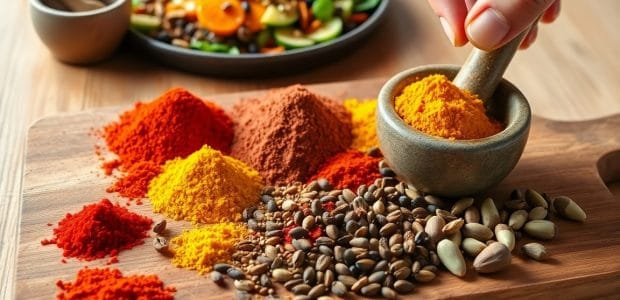Have you ever wondered if your spice rack could be a secret weapon for your metabolism? The connection between certain spices and metabolic function isn’t just culinary folklore—it’s backed by science. Many common kitchen spices contain powerful compounds that can gently increase your body’s calorie-burning capacity, enhance digestion, and support overall metabolic health. In this comprehensive guide, we’ll explore the fascinating world of metabolism-boosting spices, how they work, and the most effective ways to incorporate them into your daily routine for maximum benefit.
Whether you’re looking to support weight management goals or simply optimize your body’s natural processes, understanding how spices influence metabolism offers a natural, accessible approach to enhancing your wellbeing through everyday foods. Let’s discover how these flavorful additions can do more than just tantalize your taste buds.
Understanding How Spices Affect Your Metabolism
Metabolism refers to all the chemical processes that occur within your body to maintain life, including converting food into energy. Your metabolic rate—how quickly your body burns calories—is influenced by numerous factors including age, gender, muscle mass, and yes, even what you eat.
The Science Behind Thermogenic Spices
Many metabolism-boosting spices work through a process called thermogenesis—literally “heat production.” Thermogenic compounds in certain spices temporarily increase your body temperature and energy expenditure, causing you to burn more calories. Additionally, some spices:
- Improve insulin sensitivity, helping to regulate blood sugar
- Enhance fat oxidation (the breakdown of fat molecules)
- Support digestive enzyme production
- Reduce inflammation that can otherwise slow metabolic processes
- Improve nutrient absorption efficiency
Research published in the International Journal of Obesity Reviews found that certain bioactive compounds in spices like capsaicin can increase energy expenditure by 4.5-5% and fat oxidation by 10-16% temporarily after consumption. A separate study in the British Journal of Nutrition showed that consuming spices like ginger can increase thermogenesis. While these percentages might seem small, consistent consumption may contribute to metabolic benefits over time when combined with other healthy habits.
Top 7 Spices That Boost Metabolism
Let’s explore the most powerful spices for enhancing metabolic function, their specific benefits, and how they work within your body.
Cayenne Pepper: The Heat That Burns Calories
Cayenne pepper contains capsaicin, perhaps the most well-researched thermogenic compound found in spices. This fiery molecule not only gives cayenne its signature heat but also:
- Increases calorie burning for up to 30 minutes after consumption
- Reduces appetite by triggering feelings of fullness
- Helps break down fat cells through a process called lipolysis
- Improves circulation, delivering more oxygen and nutrients to cells
How effective is it? A study in the American Journal of Clinical Nutrition found that consuming just 1 gram of red pepper (containing capsaicin) with meals increased energy expenditure by approximately 10 kcal over a 4.5-hour period and reduced energy intake at subsequent meals. While this effect is modest, the cumulative impact could be meaningful over time.
Best ways to use it: Add a pinch to scrambled eggs, sprinkle on roasted vegetables, stir into soups, or mix into a morning smoothie (start with just a tiny amount!).
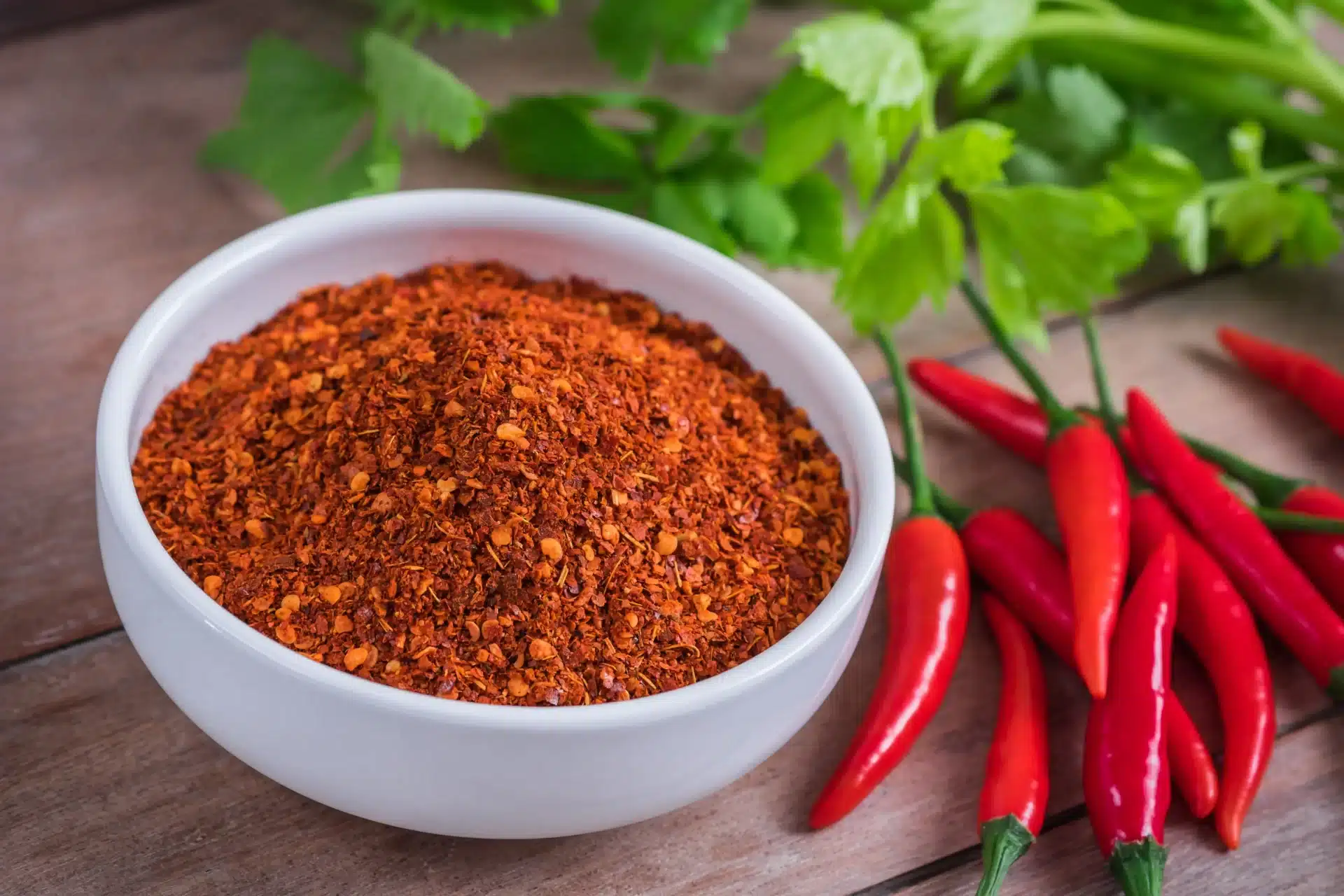
Turmeric: The Golden Spice for Metabolic Health
Turmeric contains curcumin, a powerful anti-inflammatory compound that addresses one of the root causes of slowed metabolism—systemic inflammation.
Turmeric works by:
- Reducing inflammatory markers that can interfere with metabolism
- Supporting liver function, enhancing detoxification processes
- Improving insulin sensitivity
- Preventing fat tissue growth by inhibiting new blood vessel formation in fat tissue
Absorption tip: Turmeric’s benefits are maximized when consumed with black pepper (which contains piperine) and some form of healthy fat. Research in the journal Planta Medica found that piperine can increase curcumin bioavailability by up to 2,000% by inhibiting certain metabolic pathways that would normally break down curcumin in the digestive system.
Best ways to use it: Prepare golden milk (turmeric latte), add to egg dishes, incorporate into rice, or blend into smoothies with a pinch of black pepper.

Ginger: Warming Your Metabolism From Within
Used medicinally for thousands of years, ginger contains gingerols and shogaols that stimulate multiple metabolic effects:
- Increases body temperature and calorie burning
- Reduces intestinal inflammation, improving nutrient absorption
- Helps regulate blood sugar levels, preventing insulin spikes
- Reduces muscle pain, potentially supporting more active lifestyles
A 2018 review published in the Annals of the New York Academy of Sciences examined multiple studies on ginger supplementation and found evidence supporting ginger’s positive effects on weight management markers, insulin sensitivity, and lipid profiles when consumed regularly, though the authors noted that more research with standardized doses is still needed.
Best ways to use it: Steep fresh ginger slices in hot water for tea, add minced ginger to stir-fries, blend into smoothies, or incorporate into salad dressings.
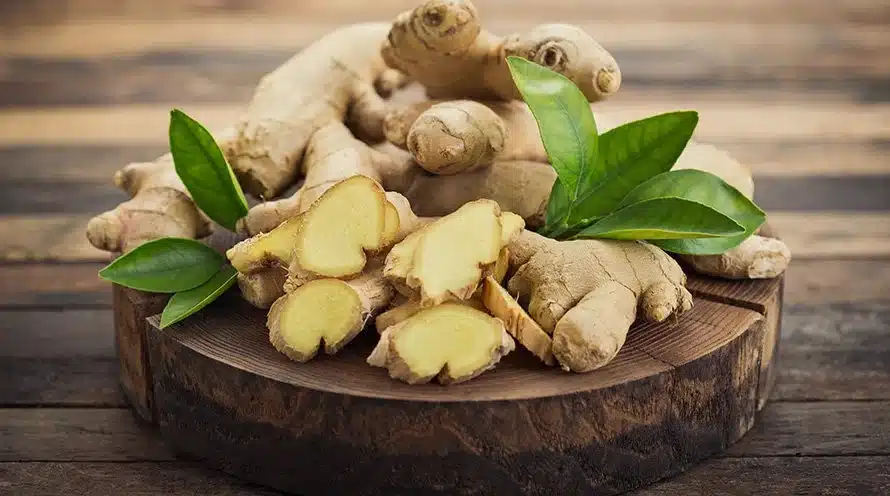
Cinnamon: Balancing Blood Sugar and Metabolic Rate
Cinnamon contains cinnamaldehyde, a compound that:
- Improves cellular glucose uptake, mimicking insulin
- Prevents blood sugar spikes that can lead to fat storage
- Increases core body temperature slightly
- Contains powerful antioxidants that reduce oxidative stress
Types matter: Ceylon cinnamon (true cinnamon) contains lower levels of coumarin (a compound that can be harmful in large doses) than Cassia cinnamon, making it the preferred choice for regular consumption.
Best ways to use it: Sprinkle on oatmeal or yogurt, add to coffee grounds before brewing, incorporate into smoothies, or use in savory dishes like Moroccan tagines.
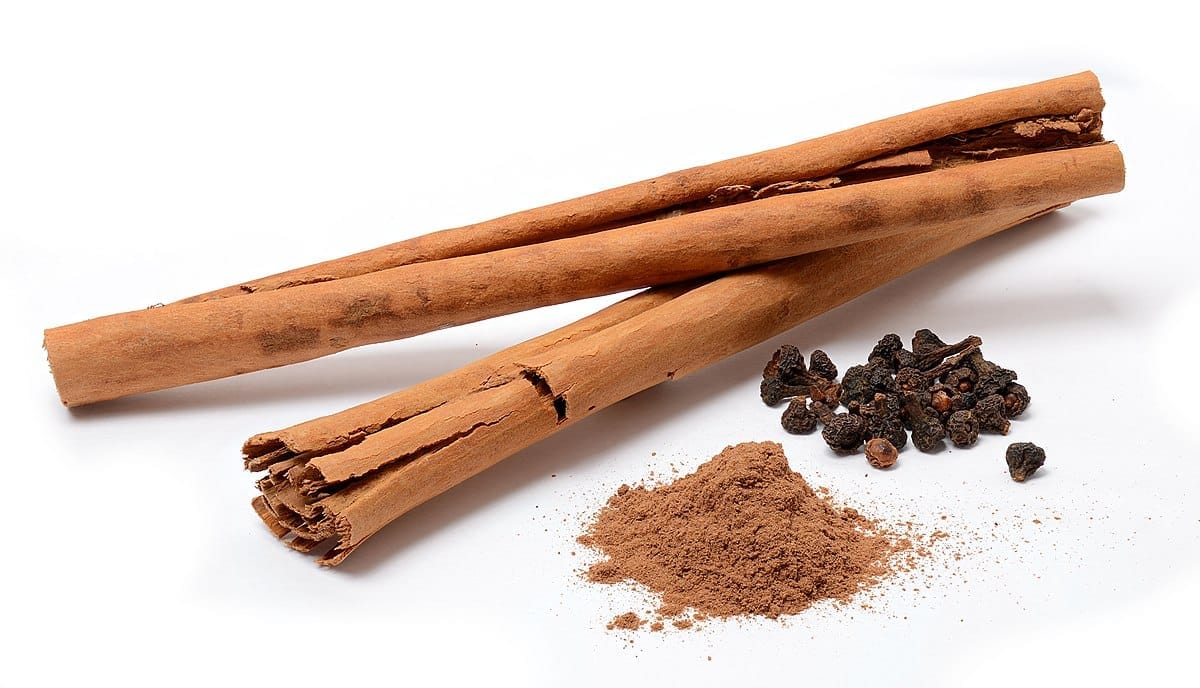
Black Pepper: The Piperine Effect on Metabolism
Black pepper contains piperine, which:
- Inhibits the formation of new fat cells
- Enhances the absorption of nutrients and other beneficial plant compounds
- Stimulates TRPA and TRPV receptors, causing a mild thermogenic effect
- Supports digestive enzyme production
Perhaps most importantly, black pepper dramatically increases the bioavailability of other metabolism-supporting compounds, making it a crucial “synergist” in your metabolic toolkit.
Receptors and thermogenic effects: Research published in the Journal of Nutritional Biochemistry has shown that piperine activates TRPV1 receptors (similar to capsaicin), which can induce a mild thermogenic effect. These receptors play a key role in temperature regulation and energy metabolism.
Best ways to use it: Freshly ground black pepper can be added to virtually any dish—vegetables, meats, soups, eggs, and even fruit for a surprising flavor contrast.
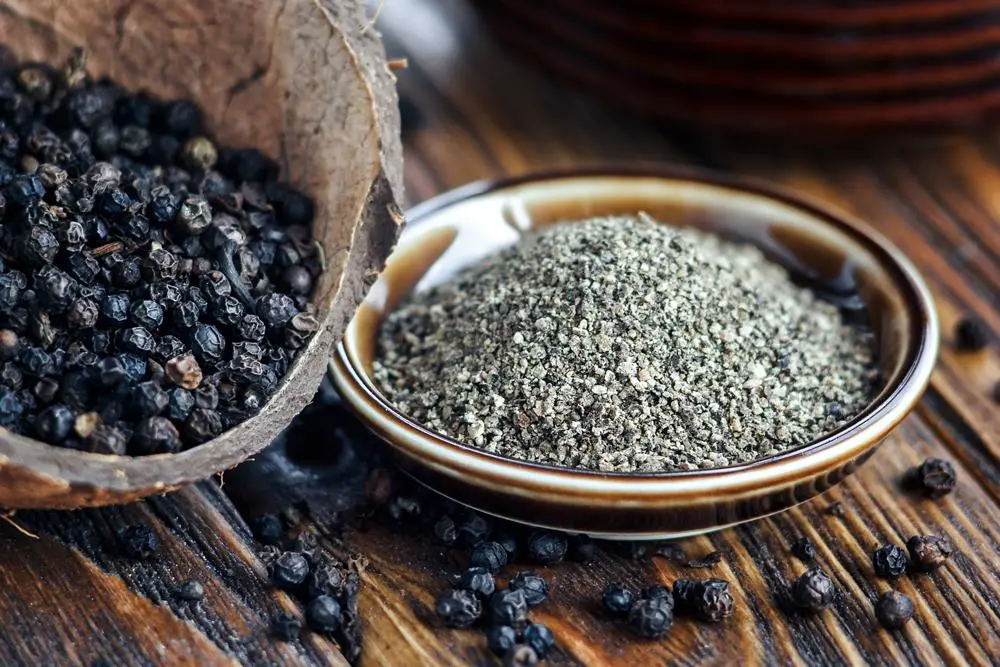
Cumin: The Overlooked Metabolism Enhancer
Often overshadowed by more popular spices, cumin deserves attention for its metabolic benefits:
- Contains phytosterols that inhibit cholesterol absorption
- Improves insulin sensitivity
- Enhances digestion through stimulating enzyme secretion
- Provides iron, supporting oxygen transport and energy production
A randomized controlled trial published in Complementary Therapies in Clinical Practice (2014) found that overweight women who consumed 3 grams of cumin powder daily for three months experienced significant reductions in weight, BMI, waist circumference, and body fat percentage compared to a control group that consumed yogurt without cumin.
Best ways to use it: Toast cumin seeds briefly to release flavor before adding to dishes, incorporate ground cumin into taco seasonings, bean dishes, or roasted vegetable medleys.
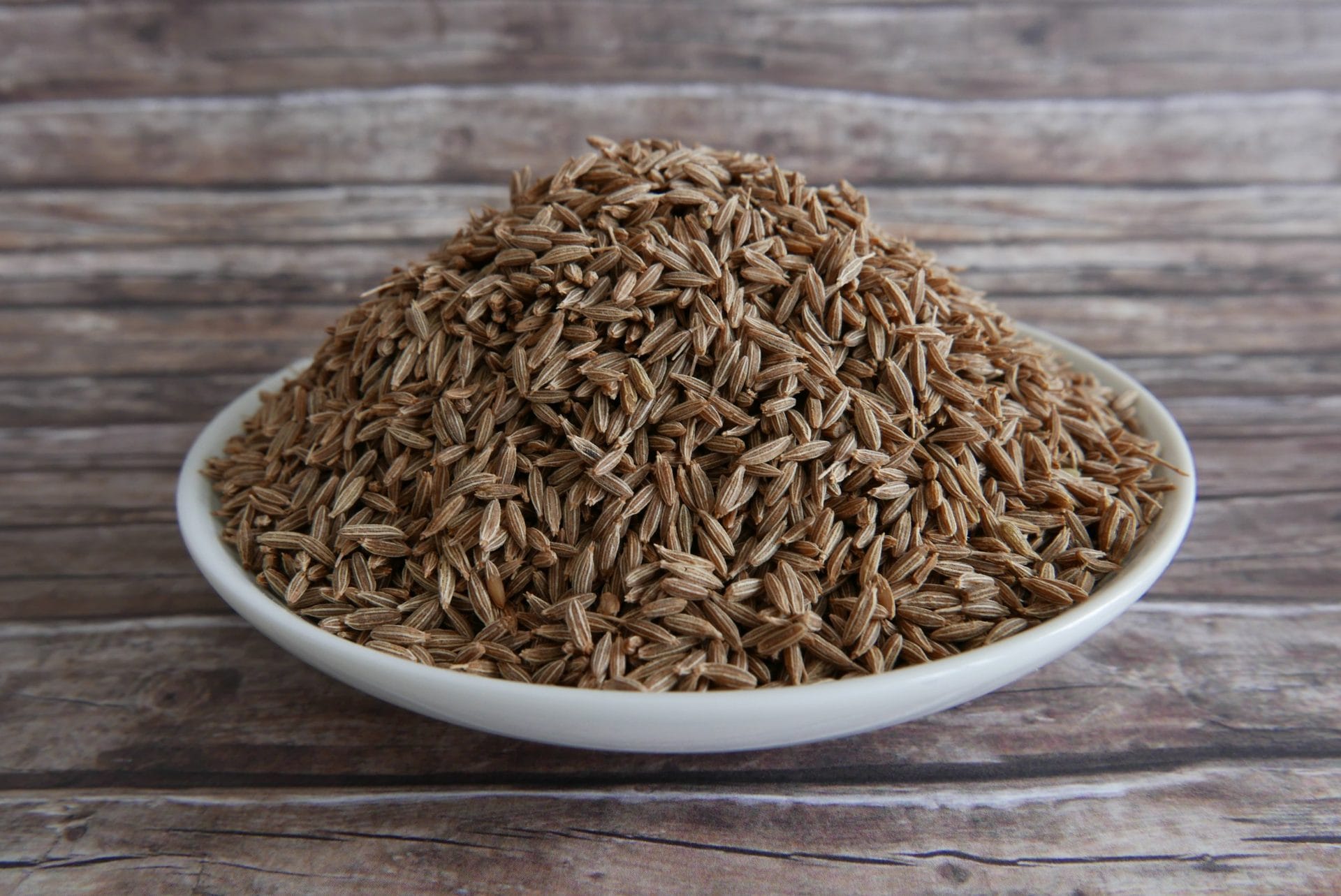
Cardamom: Digestion and Metabolic Support
This aromatic spice common in Indian cooking:
- Contains antioxidant compounds like 1,8-cineole that support metabolic health
- Enhances digestive function by stimulating digestive enzyme production and reducing bloating
- May help regulate blood glucose levels through its anti-inflammatory properties
- Has been shown in preliminary research to potentially improve oxygen consumption during exercise
Best ways to use it: Add cardamom pods to rice while cooking, incorporate ground cardamom into baked goods, or add to coffee grounds for a Middle Eastern-inspired beverage.
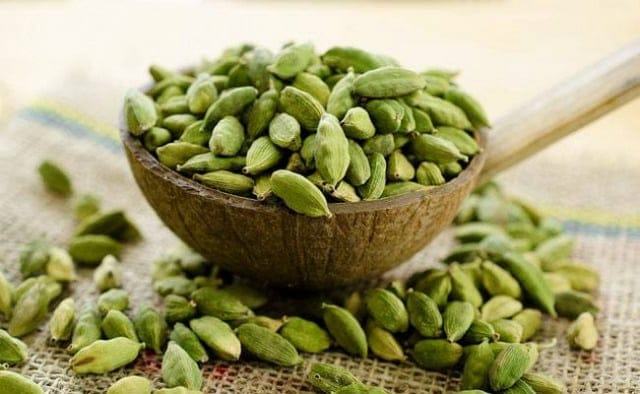
How to Include Metabolism-Boosting Spices in Your Daily Diet
Consistency is key when using spices for metabolic benefits. Here’s how to make them a regular part of your routine without getting bored.
Simple Recipes to Maximize Metabolic Benefits
Morning Metabolism Booster Smoothie
- 1 cup unsweetened almond milk
- ½ banana
- 1 tablespoon almond butter
- ¼ teaspoon ground turmeric
- ⅛ teaspoon ground cinnamon
- Tiny pinch of cayenne pepper
- Pinch of black pepper
- ½ teaspoon fresh ginger, grated
- Ice to taste Blend all ingredients until smooth. Enjoy immediately.
Metabolism-Supporting Spice Blend Make a large batch of this blend to sprinkle on meals throughout the week:
- 2 tablespoons ground cumin
- 1 tablespoon ground turmeric
- 1 tablespoon ground cinnamon
- 1 teaspoon ground ginger
- 1 teaspoon ground black pepper
- ½ teaspoon ground cardamom
- ¼ teaspoon cayenne pepper (adjust to taste) Mix thoroughly and store in an airtight container away from heat and light.
Detox Tea Blend
- 1-inch fresh ginger, sliced
- 1 cinnamon stick
- 2 cardamom pods, crushed
- Pinch of turmeric
- Pinch of black pepper
- 1 teaspoon honey (optional)
- 1 slice lemon Steep all ingredients in hot water for 5-10 minutes before straining and enjoying.
Optimal Combinations for Enhanced Effects
Certain spice combinations work synergistically to maximize metabolic benefits:
- The Classic Duo: Turmeric + Black Pepper The piperine in black pepper increases curcumin absorption from turmeric by up to 2,000%.
- Sweet Metabolism Boost: Cinnamon + Ginger This combination helps regulate blood sugar while providing a double thermogenic effect.
- Triple Threat: Cayenne + Ginger + Cinnamon This powerful combination targets multiple metabolic pathways simultaneously.
- Digestion Optimizer: Cumin + Cardamom Supports comprehensive digestive health, improving nutrient absorption and utilization.
Pro tip: Add these spice combinations to healthy fats like olive oil, coconut oil, or avocado to enhance absorption of fat-soluble compounds.
Setting Realistic Expectations: What Spices Can and Cannot Do
While the research on metabolism-boosting spices is promising, it’s important to maintain realistic expectations. Spices are not magic weight loss pills or metabolism miracle workers.
What spices can do:
- Create small but meaningful increases in metabolic rate
- Support overall metabolic health through multiple mechanisms
- Enhance the body’s natural fat-burning capabilities
- Improve digestion and nutrient absorption
- Add flavor to healthy foods, making nutritious eating more enjoyable
What spices cannot do:
- Overcome the effects of a poor diet high in processed foods
- Replace physical activity and regular exercise
- Cause dramatic weight loss on their own
- Work instantly—benefits are cumulative and require consistent use
Combining Spices With a Balanced Lifestyle
For optimal metabolic health, use metabolism-boosting spices as part of a comprehensive approach that includes:
- Regular physical activity, including both cardio and strength training
- Adequate protein intake to support muscle maintenance
- Sufficient sleep (7-9 hours for most adults)
- Stress management techniques like meditation or yoga
- Proper hydration with minimal consumption of sugary beverages
- A diet rich in whole, minimally processed foods
Remember that even small changes, when maintained consistently, can lead to significant improvements in metabolic health over time.
Important Precautions When Using Metabolism-Boosting Spices
While generally safe for most people when used in culinary amounts, metabolism-boosting spices may not be appropriate for everyone.
Who Should Use Caution With Certain Spices
Consult your healthcare provider before using therapeutic amounts of spices if you:
- Are pregnant or breastfeeding
- Have gallbladder disease or gallstones
- Take blood-thinning medications (especially with turmeric and ginger)
- Are scheduled for surgery within two weeks
- Have diabetes and take medication (as some spices may enhance the effects of diabetes drugs)
- Have gastroesophageal reflux disease (GERD) or ulcers (especially with cayenne)
Potential side effects: When consumed in large amounts, some metabolism-boosting spices can cause:
- Digestive discomfort or heartburn
- Mouth and throat irritation (particularly with cayenne)
- Lower blood sugar beyond desired levels
- Mild allergic reactions in sensitive individuals
Start with small amounts and gradually increase to assess your tolerance.
FAQs About Metabolism-Boosting Spices
Conclusion: Spicing Up Your Metabolic Health
Incorporating metabolism-boosting spices into your daily routine represents one of the simplest, most accessible ways to support your body’s natural metabolic processes. These flavorful additions not only make healthy eating more enjoyable but also provide a wide range of compounds that can enhance thermogenesis, improve digestion, support blood sugar regulation, and reduce inflammation.
Remember that the key to success lies in consistency and combination—both in regularly using these powerful spices and in pairing them with other healthy lifestyle practices. Start small by incorporating one or two new spices into your routine, then gradually expand your metabolic spice cabinet as you discover combinations that please your palate.
By harnessing the natural power of spices that boost metabolism, you’re taking a time-tested, science-backed approach to enhancing your body’s efficiency and supporting your overall health goals. Your journey to improved metabolic health can be as close as your kitchen spice rack!
Ready to spice up your metabolism? Start today by adding just one new metabolism-boosting spice to your next meal and build from there.
Read more:

